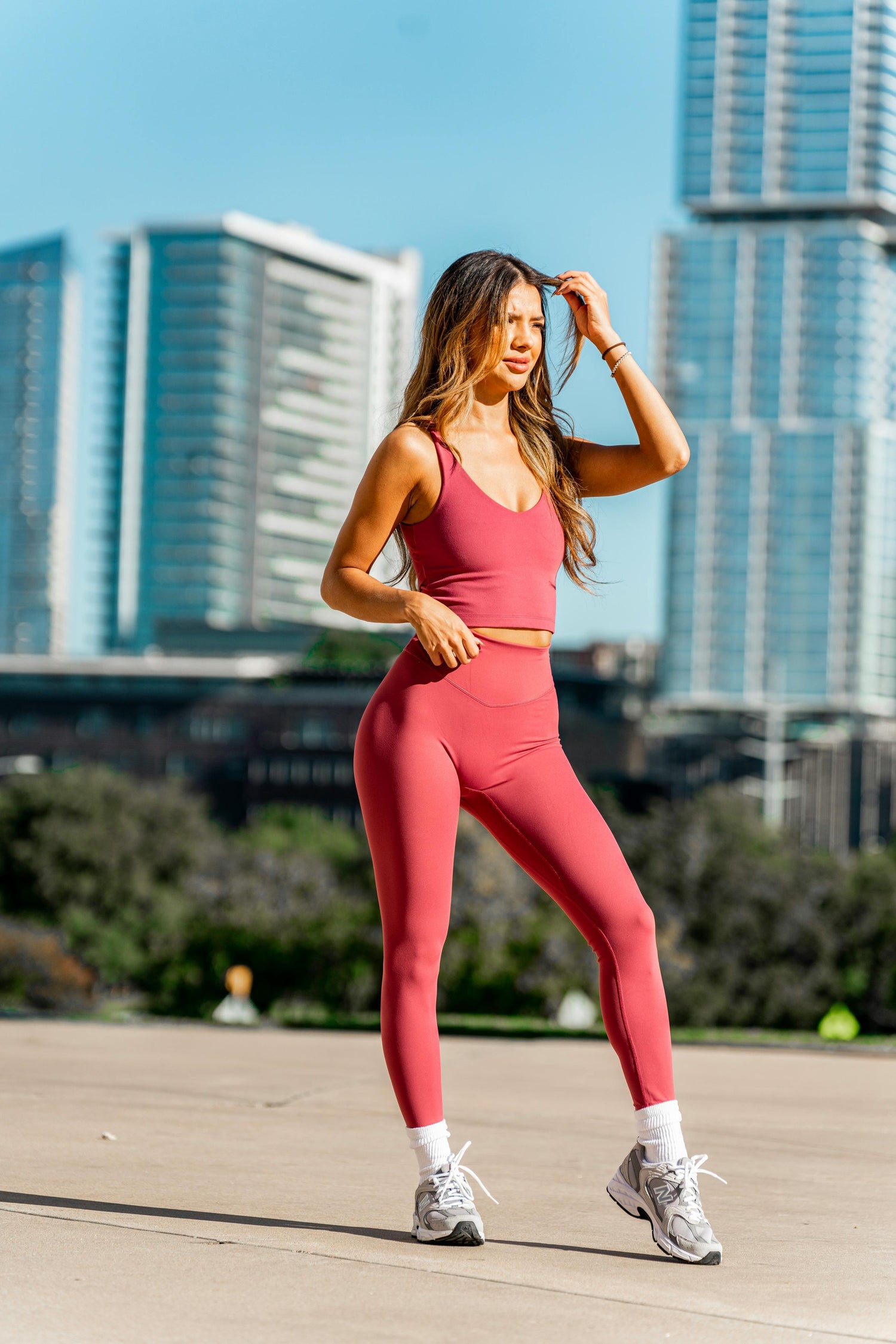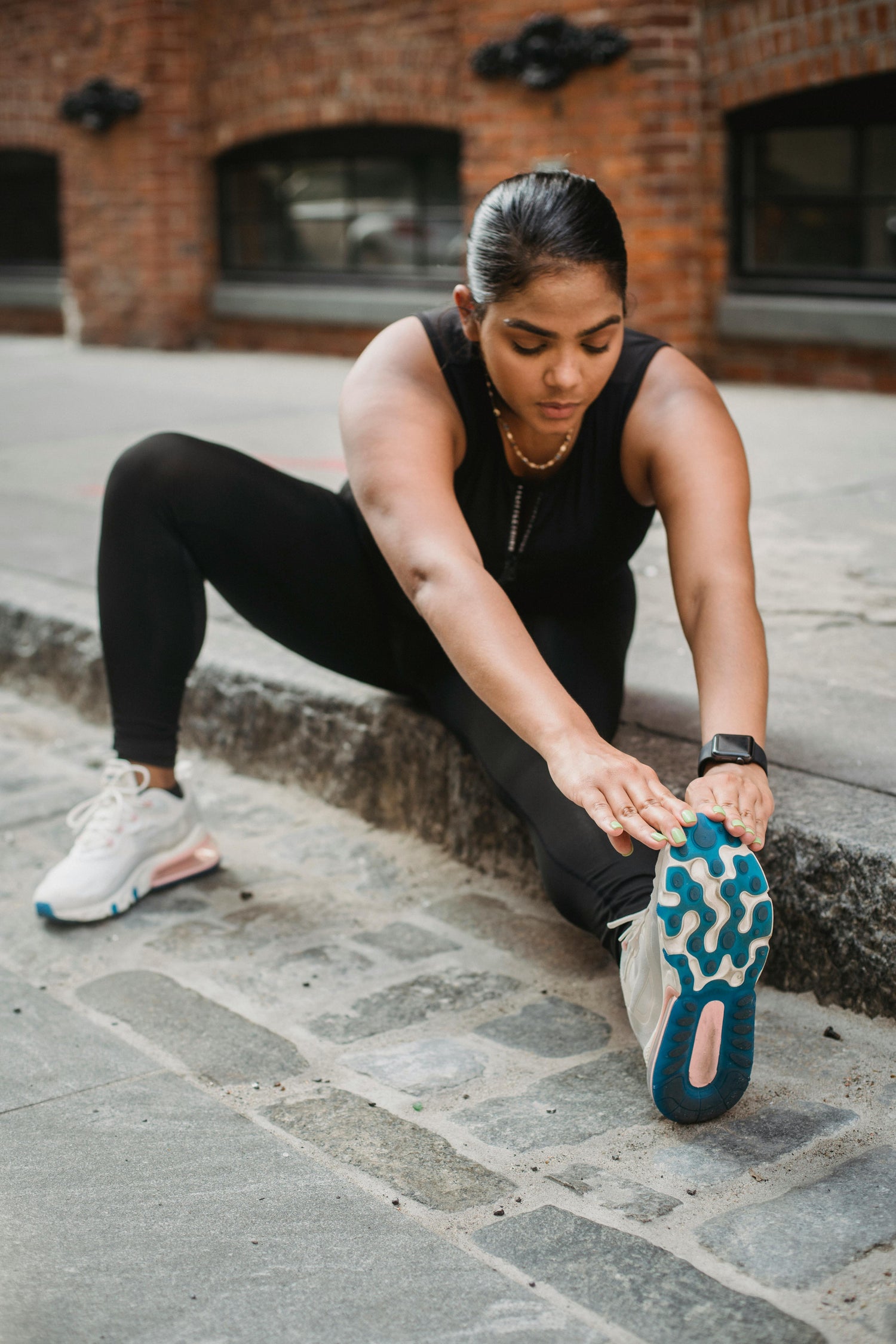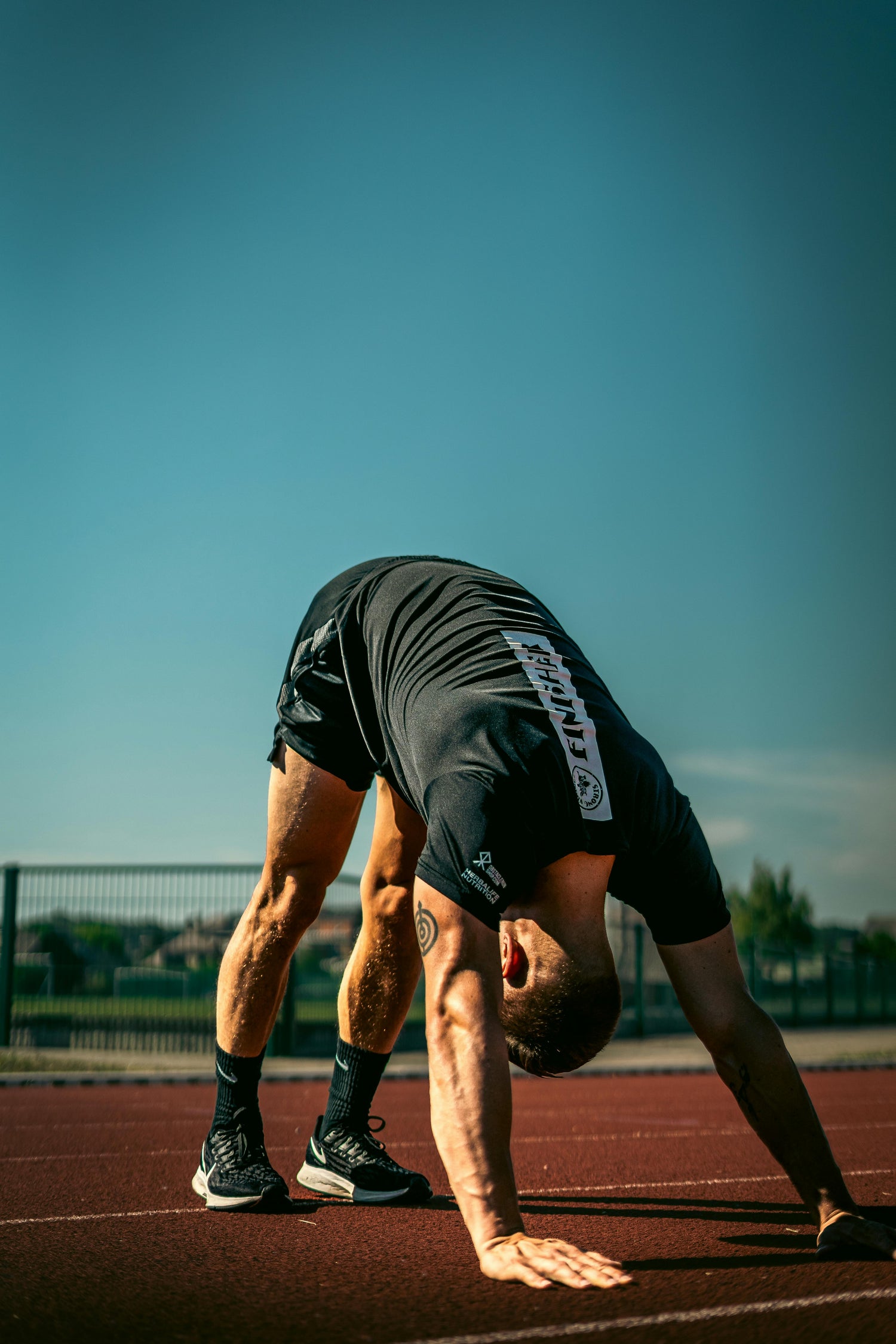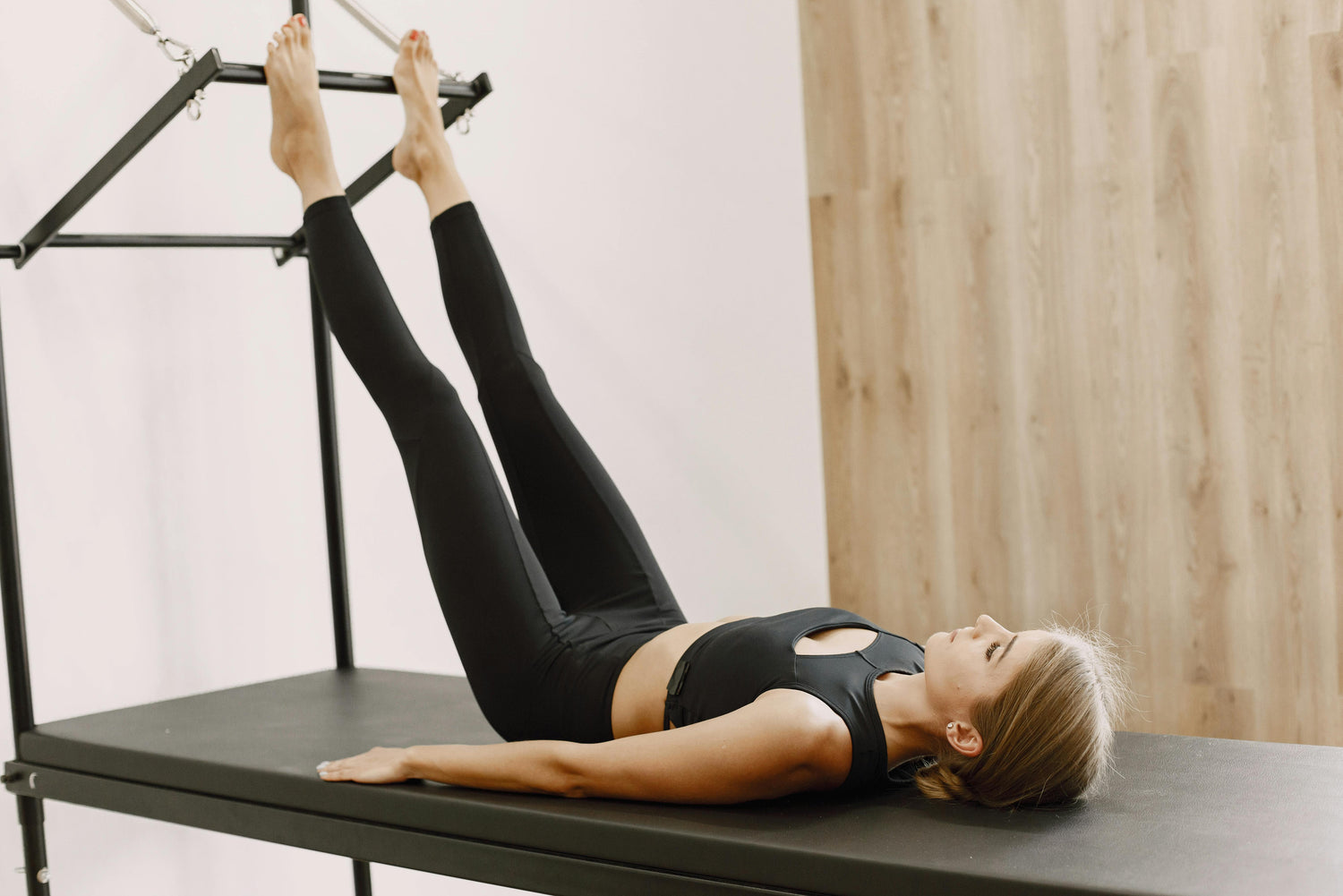WHAT IF YOGA WAS INVITED TO THE 2025 PARIS MARATHON
On the occasion of the Paris Marathon on Sunday, April 13, 2025 , we shine a spotlight on yoga, this unsuspected ally of long-distance runners. Much more than a simple post-race stretch, yoga is invited into the marathon runners' stride to strengthen breathing , prevent injuries, improve recovery and balance effort through body awareness. When endurance meets full presence for the Brave New World!
Written by TINA - April 2025
Collapsible content
Reading time
About 10 minutes
WHAT YOU ARE ABOUT TO DISCOVER
• The essential role of breathing in physical performance and the management of prolonged effort.
• How postural yoga strengthens the runner's alignment, grounding and stability.
• Key postures to gently prepare the body and avoid chronic injuries.
• Deep recovery tools to relieve muscles after exercise.
• Concentration and mental resilience practices to overcome your limits.
• How the yoga mat becomes a space for balance and complementary training .
"Let's take a look"!

THE BREATH AT THE HEART OF ENDURANCE
Even before the first step, there is the breath. In running, as in yoga, it sets the pace, supports the mind, and optimizes each movement. Yet, for many runners, breathing remains unconscious, often too rapid or superficial. Yoga, with its pranayama techniques, offers a refined approach to breathing as a tool for endurance.
Working on your breathing through exercises such as Nadi Shodhana (alternate nostril breathing) or Ujjayi (victorious breathing) helps to better oxygenate the muscles, calm the nervous system and maintain concentration, even during full effort. This mastery of breathing plays a decisive role in regulating the heart rate and managing the stress associated with competition.
Before the start of a marathon, incorporating a few minutes of conscious breathing can prepare the mind for the challenge, stabilize emotions, and refocus energy. During the race, returning to the breath in moments of fatigue or doubt becomes an inner anchor, almost meditative.
Yoga teaches that breath guides movement, not the other way around. This philosophy, when applied to running, transforms the performance experience into a fluid, connected, and more respectful exploration of the body. Breath by breath, step by step, breath becomes an invisible... but decisive ally.

PHYSICAL PREPARATION AND TARGETED POSTURES FOR RUNNERS
A marathon cannot be improvised. It requires weeks, sometimes months of physical preparation. Yet, many runners overlook the importance of flexibility , joint stability , and muscle recovery . This is where yoga comes in as a strategic complement to traditional training.
By incorporating certain poses into a weekly routine, runners can not only prevent injuries but also improve their performance. Poses like Utthita Ashwa Sanchalanasana (high lunge) or Ardha Hanumanasana (half splits) help open the hips, which are often put under strain by the miles. Others, like Malasana (yogic squat), strengthen stability and relax the lower back.
Yoga also strengthens deep core muscles , particularly in the abdominals, psoas, and lower back—essential for maintaining effective posture throughout the run. And unlike static stretches that are often performed without awareness, yoga poses involve mental engagement and breathwork, making them more complete.
This approach helps improve stride, relieve tension accumulated in the legs, and provide better body awareness . The body becomes more flexible, more aligned, more available. In other words, better able to withstand the effort without weakening.
Before a marathon, a fluid sequence of targeted postures can become a true centering and warm-up ritual. After the race, these same postures support recovery, soothe tension, and promote muscle regeneration.

GENTLE PHYSICAL PREPARATION AS SO HEALTHY AND MIRACULOUSLY SMART
Much more than just a workout supplement, yoga is a smart approach to movement that prepares the body for effort without rushing it. In the context of a marathon, where the repetition of ground impact can generate tension and imbalances, a targeted yoga practice offers gentle, preventative, and effective physical preparation .
Yoga postures promote joint warm-up , muscle flexibility and energy circulation , preparing the runner for the intensity of the race. Key areas are particularly stressed in runners: tight hamstrings , locked hips , overused lower back , sensitive ankles ... These are all points that yoga helps to release with precision and kindness.
Active stretches, such as downward dog (Adho Mukha Svanasana) or warrior I (Virabhadrasana I) , strengthen alignment while developing muscular endurance. Yoga also works the posterior chains and core , improving posture and reducing the risk of compensation while running.
But beyond the physical, yoga also develops a subtle awareness of the body : knowing when to slow down, breathe, and adjust. This fine awareness allows you to adapt your effort to your actual abilities, avoiding injuries due to overestimation or a lack of deep preparation.
Yoga then becomes a strategic partner for the runner, ensuring that the integrity of the body is preserved , strength and flexibility are balanced, and long-term progress is supported. A way to run further, but above all, more accurately.

POST-MARATHON YOGA: RECOVERY AS WELL AS REGENERATION
After miles of intense effort, the body needs rest, relaxation, and gratitude. Yoga, practiced after running, becomes a profound regeneration tool that supports the runner in their physical and mental recovery phase.
Certain key postures can help relieve muscle tension , improve blood circulation , and prevent muscle aches . Asanas like Supta Baddha Konasana (Butterfly Pose), Viparita Karani (Legs Against a Wall Pose), and Balasana (Child's Pose) promote passive relaxation of the body while activating the parasympathetic system, the system of regeneration.
Breathwork takes center stage here: by lengthening the exhalation, we calm the heart rate, reduce nervous tension, and facilitate the return to calm. Abdominal breathing or cardiac coherence can be integrated into this post-race phase to maximize the benefits.
Post-run yoga is not just a set of stretching exercises: it is a moment of bodily listening where the runner can return to his sensations, observe areas of fatigue or fragility, and offer himself a gentle and respectful treatment. It is also an opportunity to celebrate the effort accomplished , to honor the limits crossed and the kilometers covered.
By incorporating these post-race rituals, we not only promote better muscle recovery , but also a more conscious connection to the body , thus avoiding excess or long-term injuries. Yoga here becomes a space for gratitude, refocusing, and restorative gentleness.

THE MENTAL POWER OF YOGA TO OVERCOME THE FAMOUS "30TH KILOMETER WALL"
In running, there is a moment that marathon runners dread: the 30-kilometer wall . This breaking point, where energy reserves dwindle and the mind falters, is as much a physical challenge as it is an emotional one. This is where yoga comes into play as an ally of the mind , revealing all its inner power.
Yoga has always taught that the body follows the mind . And that when we master the fluctuations of the mind, we find the strength to move forward, even in adversity. The tools derived from yogic practice— meditation, concentration (Dharana), breathing (Pranayama) —then become valuable resources to avoid being overwhelmed by fatigue or doubt.
Visualizing a smooth run, calm breathing, and a joyful finish can positively reprogram the experience. Repeating simple mantras (such as "I am strong," "I continue," "I breathe") becomes a guiding principle for staying in the present moment, despite the effort.
Some active meditation practices can even be incorporated into running, bringing attention back to the cadence of the steps, the breath or the landscape. This allows you to leave the negative mental loop and find a state of presence , calmer and more centered.
By cultivating these skills before and during the race, the runner learns to observe without judgment , to welcome discomfort without identifying with it , and above all, to stay the course despite the turbulence .
The wall is no longer an obstacle, but an initiatory passage. An opportunity to draw on invisible, but powerful resources. Thanks to yoga, endurance is not limited to the body: it becomes an inner, stable and resilient force .

WHEN THE YOGA MAT BECOMES A SUSTAINABLE CROSS-TRAINING GROUND
More and more runners—from recreational runners to seasoned marathoners—are discovering the benefits of cross-training by incorporating yoga into their routine. Far from being reserved solely for recovery, yoga mat becomes a real complementary training ground , allowing you to optimize your overall performance, both physically and mentally.
Yoga strengthens muscle groups often neglected by running, such as the deep abdominal muscles, stabilizing muscles, and the upper back. By working on postural balance and proprioception , it reduces imbalances and compensates for the repetitive effects of unilateral running. This helps prevent chronic injuries common among runners (knees, Achilles tendons, hips, etc.).
Beyond the physical benefits, this practice also develops mental endurance. The postures held, controlled breathing, and attention paid to internal sensations train the mind to remain centered and lucid in the face of fatigue . Yoga thus offers a more conscious approach to movement and rest, directly linked to the demands of long-term effort.
By incorporating even just one or two yoga sessions per week, runners experience better energy management , optimized recovery, and a greater ability to listen to their bodies. The mat then becomes much more than an accessory: it becomes the silent ally of sustainable, balanced preparation, fully aligned with the demands of the marathon.
Thank you TINA for this post
Thank you for this beautiful inner and outer race around the 2025 Paris Marathon . May each stride, like each breath on the treadmill, bring you closer to your own finish line: that of balance, strength and mindfulness.
TINA's Bio
-

TINA
1994, Reunion Island & Mauritius, a Life driven by the Indian Ocean and Yoga
Since childhood, this intrepid traveler has traveled the globe, leaving her footprints on beaches around the world.Passionate about surfing, scuba diving and sailing, she has made the oceans her playground and source of inspiration.
The freedom of the waves, the serenity of the ocean depths and the wind in his sails have punctuated his journey, always guided by a quest for connection with nature.
It was through her explorations that yoga became more than a practice for her – it was a way of life.
Between early morning surf sessions and meditative sunsets, she found in yoga a perfect balance of strength, flow and self-awareness.
Today, she combines her passion for water sports with teaching yoga and is part of the Yogaterrae team, here in France, in the South West and often remotely :)
This adventurer is a true source of inspiration for anyone who aspires to live in harmony with their body and nature.
Through her stories of incredible experiences, she invites everyone to open up to a world where every wave, every breath and every posture is a celebration of life.



